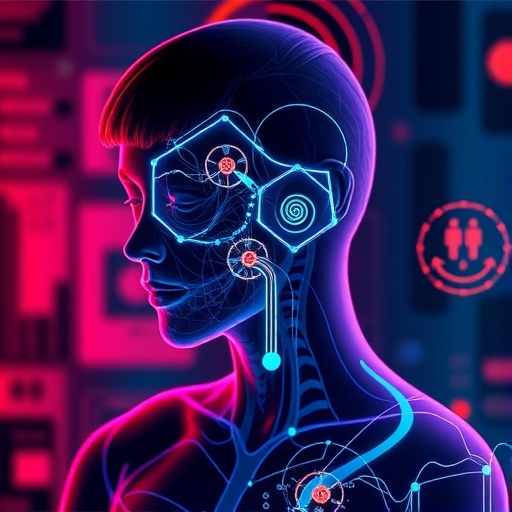Affective computing, a discipline introduced by Rosalind Picard in 1997, has evolved dramatically since its inception. Initially, research in this field was largely focused on understanding and interpreting human emotions through observable behavioral cues, including facial expressions and vocal tones. The goal was to develop systems that could recognize and respond to emotional states in a meaningful way. However, recent advancements have propelled affective computing into a new realm, where wearable devices emerge as crucial tools for acquiring multimodal physiological signals. These devices collect diverse data across various sensor channels with distinct sampling frequencies, physiological sources, and signal characteristics.
Typically housed in sleek consumer-grade accessories like smartwatches and fitness trackers, today’s wearable devices continuously gather data on individuals’ physiological responses, enhancing the potential for accurately interpreting emotions in real time. The study of multimodal signals—those derived from multiple sources—is increasingly recognized as key to advancing the accuracy and depth of emotion recognition. Researchers from the Department of Psychological and Cognitive Sciences at Tsinghua University have recently reviewed developments in this field, emphasizing data processing flows, multimodal fusion strategies, and the architectural models that underpin affective computing systems.
The importance of both public datasets and self-collected data cannot be understated in the context of developing affective computing, according to co-author Dan Zhang. He highlights that these data sets demonstrate remarkable consistency with respect to modalities used, devices for data collection, duration of signals, number of subjects involved, and methodologies for labeling emotional states. Predominantly, common physiological modalities such as Electrodermal Activity (EDA) and Heart Rate (HR) are extensively utilized, with a high reliance on commercially available wearable devices like the Empatica E4. This standardization is essential for ensuring that findings are comparable across studies.
One significant aspect of self-collected data is its incorporation of sports-related contexts, where researchers simulate walking scenarios to capture comprehensive multimodal signals, including EDA, accelerometry (ACC), and HR data. Such data are invaluable for applications in sports and exercise science, offering insights into emotional fatigue experienced during training or identifying how athletes regulate their emotions under the pressure of competition. The implications of these findings extend beyond improving individual performance; they provide pathways for designing interventions aimed at enhancing athletes’ emotional wellbeing and resilience.
When it comes to integrating multimodal data, the process can occur at various stages within the modeling pipeline—this is known as multimodal fusion. Zhang and his co-author Fang Li outline that fusion can be executed at three distinct levels: feature-level, model-level, and decision-level. Feature-level fusion serves as a straightforward approach, allowing for basic real-time analysis and integration of multiple signals. Conversely, model-level fusion captures more nuanced interactions among modalities by leveraging the network architecture itself. This enhances the depth of analysis and reveals intricate relationships between emotional states and physiological responses.
The decision-level fusion strategy allows each modality to be processed independently before being combined for final interpretations. Choosing the appropriate fusion strategy relies on multiple factors including the nature of the modalities involved, the specific characteristics of the data being analyzed, and the requirements of the classification tasks. Understanding these nuances is critical for advancing the field, especially as deep learning continues to influence the development of sophisticated affective computing models.
Deep learning techniques have made a significant impact in affective computing due to their capability to extract and model complex feature representations from data. Various architectures have gained prominence, each serving distinct functions in emotion recognition tasks. Convolutional Neural Networks (CNNs) are adept at extracting local features, making them particularly useful for processing visual data such as facial expressions. In contrast, Long Short-Term Memory (LSTM) networks are well-suited for capturing temporal dependencies, enabling the model to analyze sequences of data over time effectively.
In addition to these methodologies, transformers have emerged as another powerful architecture supporting temporal analysis over long distances through self-attention mechanisms. These networks allow for more contextual awareness, enabling models to weigh the importance of different features dynamically based on the emotional context present in the data. As researchers explore these architectures, the ability to accurately recognize and understand nuanced emotional responses in real-world settings gains momentum.
However, the journey is not without its challenges. The integration of multimodal physiological signals presents significant hurdles concerning data alignment, variability across devices, and the inherent complexity of human emotions. Researchers must navigate these challenges while striving to improve the reliability and validity of their findings. There is a critical need for standardization in data collection methodology and approaches to labeling emotions, which remain subjective in nature. Addressing these issues will require collaborative efforts from researchers, practitioners, and device manufacturers.
Looking ahead, the future of affective computing lies in its applications across multiple domains, including mental health management, personalized training programs, and even human-computer interaction. As technology continues to advance, the possibilities for leveraging wearable devices to enhance emotional awareness and wellbeing are virtually limitless. Innovations in sensing technology, coupled with sophisticated computational models, hold the potential to transform how we understand and interact with emotions in everyday life.
In conclusion, affective computing represents a compelling intersection of technology and human emotion. The ongoing research efforts by institutions like Tsinghua University highlight a progressive move towards integrating complex physiological data into a unified understanding of emotional states. With continuous advancements in deep learning architectures and multimodal signal processing, the field is poised for significant breakthroughs that promise to change our interaction with technology and enhance our emotional lives.
Subject of Research: People
Article Title: Multimodal physiological signals from wearable sensors for affective computing: A systematic review.
News Publication Date: October 2023
Web References: Intelligent Sports and Health
References: [To Be Added]
Image Credits: Li, Fang, and Dan Zhang
Keywords: Affective computing, multimodal signals, wearable devices, emotion recognition, physiological responses, deep learning, feature fusion, model architecture, emotional wellbeing, data processing.




